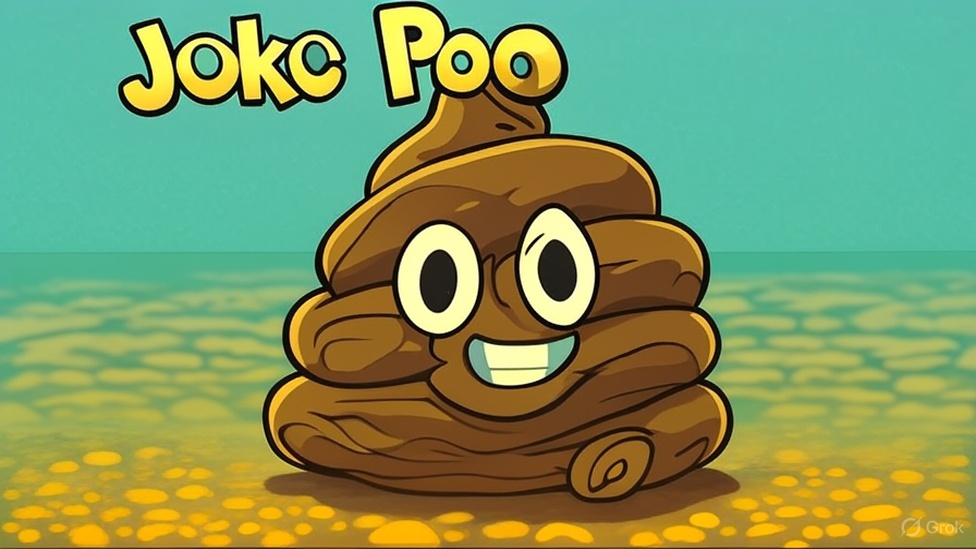So the seeker treks over hill and Delhi until he reaches the fabled mountain. It’s incredibly steep, and more than once he slips and falls. By the time he reaches the top, he is full of cuts and bruises, but there is the guru, sitting cross-legged in front of his cave. "O, wise guru,” the seeker says, “I have come to you to ask what the secret of life is.” “Ah, yes, the secret of life,” the guru says. “The secret of life is a teacup.” “A teacup? I came all the way up here to find the meaning of life, and you tell me it’s a teacup!” The guru shrugs. “So maybe it isn’t a teacup.”
Joke Poo: The Sacred Scroll
A young coder, desperate for enlightenment, heard of the legendary BugMaster living within the deepest server farm of Google’s headquarters. So, the coder navigated through endless lines of code, battling firewalls and dodging security protocols, until he finally found the BugMaster, hunched over a glowing terminal.
“Oh, BugMaster,” the coder gasped, “I have braved the digital wilderness to ask: What is the ultimate debugging technique?”
The BugMaster swiveled in his chair, his eyes shimmering with binary code. “Ah, yes, the ultimate debugging technique,” he rasped. “The ultimate debugging technique is a sacred scroll.”
“A sacred scroll? I hacked through layers of encryption and faced down AI sentinels to learn the best way to fix bugs, and you tell me it’s a scroll!” the coder exclaimed, exasperated.
The BugMaster shrugged, a flicker of mischief in his digital gaze. “So maybe it isn’t a scroll… it might be the delete key…”
Okay, let’s analyze this joke.
Key Elements:
- The Seeker’s Journey: The arduous trek to the guru highlights the commitment and expectation placed on achieving enlightenment.
- The Guru’s Unorthodox Answer: The “teacup” is a seemingly mundane and absurd answer, creating the initial comedic shock.
- The Anti-Climax/Subversion: The guru’s immediate retraction (“So maybe it isn’t a teacup”) is the punchline. It undercuts the entire premise, suggesting either the guru isn’t wise, or the secret is undefinable. It also implies the process of seeking might be more important than a concrete answer.
- The Setting (India’s highest mountain): Sets up a cliche and then subverts it
Underlying Themes:
- The futility of seeking easy answers to complex questions.
- The potential for supposed wisdom to be arbitrary or even nonsensical.
- A commentary on the guru-seeker dynamic, questioning the role and authority of gurus.
Humor Type:
- Absurdist
- Situational
- Irony
Now, let’s create some new humor based on these elements, focusing on factual or interesting tidbits:
Option 1: Witty Observation (Related to Height)
“You know, I once climbed Kangchenjunga to ask a guru about the meaning of life. He told me it was 3,500,000 grains of sand. I questioned this answer and he said it may be a lie, which made me wonder how reliable the height measurement really was”.
Option 2: A “Did You Know?” joke
“Did you know that Kangchenjunga, previously thought to be the world’s highest mountain, was demoted to third place once accurate calculations were done? Apparently, even mountains can have an identity crisis. I wonder if the guru up there has updated his secret of life accordingly. It probably isn’t a teacup.”
Option 3: New Joke (Playing on the “Teacup” concept)
A seeker finally reaches the world’s wisest (and most technologically advanced) AI. He asks, “Oh great AI, what is the meaning of life?” The AI hums for a moment, processing billions of data points. Finally, it responds: “42.” The seeker, understandably confused, asks, “But… why 42?” The AI replies, “Okay, my algorithm is clearly off. Let me reboot. In the meantime, do you want a cup of tea?”
Option 4: Observational Humor
“You know, the joke about the guru and the teacup is funny because it highlights the ridiculous lengths people will go to for an answer they may not even like. It’s like spending years getting a PhD, then realizing all you really learned was how to brew the perfect cup of tea… which, let’s be honest, is pretty valuable.”


